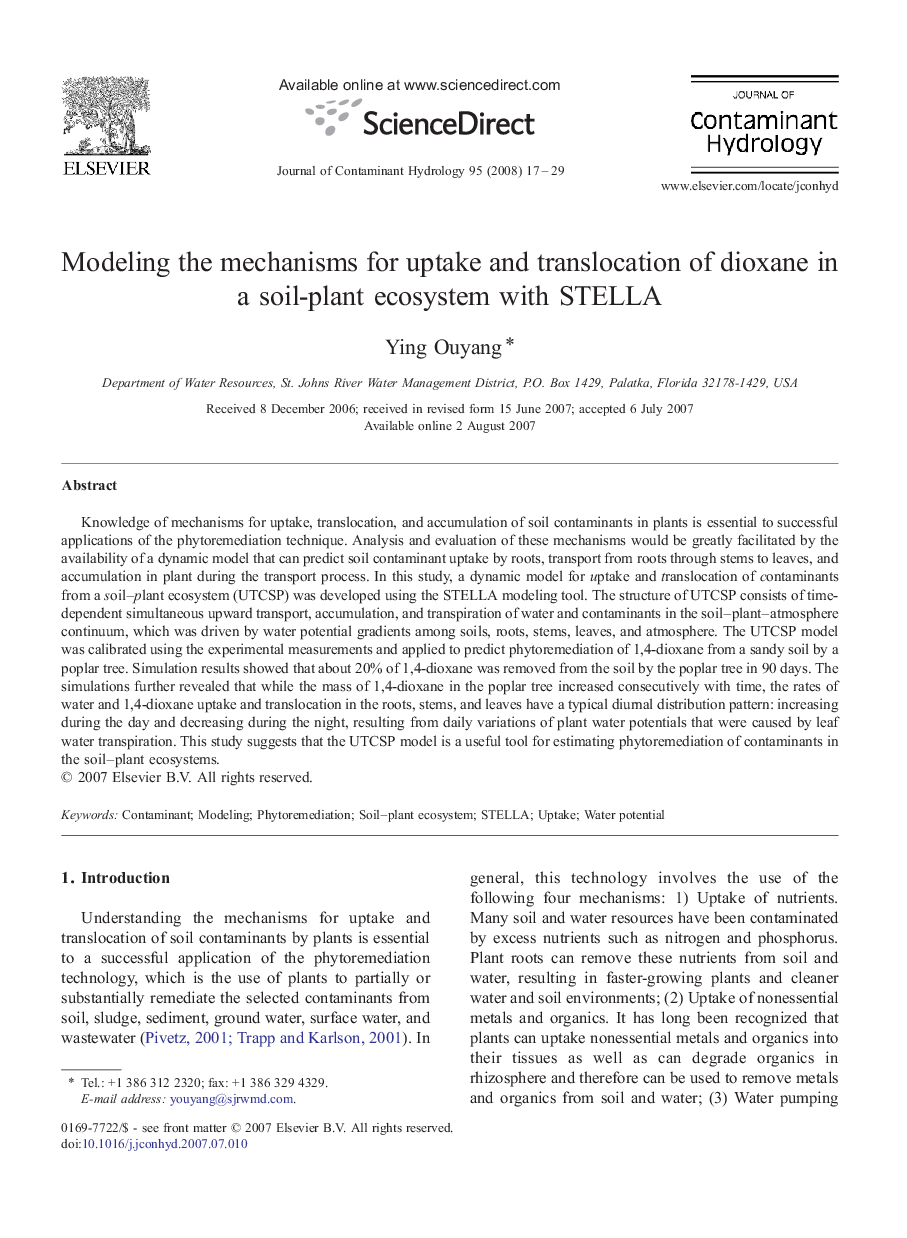| Article ID | Journal | Published Year | Pages | File Type |
|---|---|---|---|---|
| 4547429 | Journal of Contaminant Hydrology | 2008 | 13 Pages |
Knowledge of mechanisms for uptake, translocation, and accumulation of soil contaminants in plants is essential to successful applications of the phytoremediation technique. Analysis and evaluation of these mechanisms would be greatly facilitated by the availability of a dynamic model that can predict soil contaminant uptake by roots, transport from roots through stems to leaves, and accumulation in plant during the transport process. In this study, a dynamic model for uptake and translocation of contaminants from a soil–plant ecosystem (UTCSP) was developed using the STELLA modeling tool. The structure of UTCSP consists of time-dependent simultaneous upward transport, accumulation, and transpiration of water and contaminants in the soil–plant–atmosphere continuum, which was driven by water potential gradients among soils, roots, stems, leaves, and atmosphere. The UTCSP model was calibrated using the experimental measurements and applied to predict phytoremediation of 1,4-dioxane from a sandy soil by a poplar tree. Simulation results showed that about 20% of 1,4-dioxane was removed from the soil by the poplar tree in 90 days. The simulations further revealed that while the mass of 1,4-dioxane in the poplar tree increased consecutively with time, the rates of water and 1,4-dioxane uptake and translocation in the roots, stems, and leaves have a typical diurnal distribution pattern: increasing during the day and decreasing during the night, resulting from daily variations of plant water potentials that were caused by leaf water transpiration. This study suggests that the UTCSP model is a useful tool for estimating phytoremediation of contaminants in the soil–plant ecosystems.
